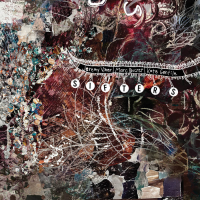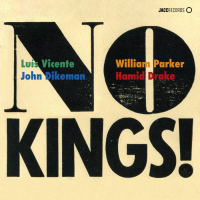Home » Jazz Articles » Album Review » Gerald Clayton: Bells On Sand
Gerald Clayton: Bells On Sand
The Vanguard disc, recorded in spring 2019, was an often exuberant or otherwise intense affair, with saxophonists Logan Richardson and Walter Smith III, both of them capable of generating heat, featured on most of the tracks. On Bells On Sand, by contrast, Clayton fronts a trio, augmented on just one track by his mentor and since 2013 employer, Charles Lloyd, on tenor saxophone. The music is for the most part delicate and intimate, reflecting the isolation and soul-searching Clayton, like most people, experienced in 2020-21.
The album is exquisitely beautiful. Clayton, who adds occasional background soundscapes on electric keyboards and vibraphone, is accompanied by his father, bassist John Clayton, whose arco playing is a feature of the first two tracks, and by his longtime friend, drummer Justin Brown, who appeared on Clayton's 2017 album, Tributary Tales (Motema). Singer Maro (no last name is given) features on two tunes. Five of the tracks are originals and there are four covers: mid twentieth century Catalan composer Federico Mompou's "Damunt de tu Només les Flors" and "Elegia," Richard Whiting and Newell Chase's evergreen standard "My Ideal" (in two parts), and saxophonist and uncle Jeff Clayton's "There Is Music Where You're Going My Friends," which closes the record. The download has a bonus track, Mompou's "Paisajes II. El Lago," but music like this deserves to be heard on a physical format rather than inferior wifi and we will not concern ourselves with the track here.
Directly and indirectly, the key figure on Bells On Sand is Mompou, whose music was heavily influenced by Erik Satie and Gabriel Fauré. Satie and Fauré, as channelled by Mompou, with whose work Clayton has become enamoured in recent years, in turn become Clayton's primary influences. A meditative and quietly uplifting vibe is maintained throughout, even on those few tracks where the tempo increases and the number of notes per bar rises. These latter tracks include "My Ideal I," which hints at stride piano towards the end, and "My Ideal 2," on which Clayton at the beginning renders the tune a bit like Thelonious Monk might have done but without Monk's dissonant grace notes. (Might these two tracks have started life as one continuous piece?)
The longest track, at eight minutes, is the penultimate "Peace Invocation," a gorgeous duet by Clayton and Lloyd with a generous helping of the saxophonist. The age difference between the two musicians is almost fifty years and they render it totally irrelevant. The album closes with Jeff Clayton's gospel-esque "There Is Music Where You're Going My Friends." To which one can only say "amen" and hit replay.
Track Listing
Water’s Edge; Elegia; Damunt De Tu Nomes Les Flors; My Ideal I: That Roy; Rip; Just A Dream; My Ideal 2; Peace Invocation; There Is Music Where You’re Going My Friends.
Personnel
Additional Instrumentation
Gerald Clayton: piano, vibraphone, electric keyboard; John Clayton: bass; Justin Brown: drums; Charles Lloyd: tenor saxophone (9); Maro: voice (3, 7).
Album information
Title: Bells On Sand | Year Released: 2022 | Record Label: Blue Note Records
Tags
PREVIOUS / NEXT
Gerald Clayton Concerts
Support All About Jazz
 All About Jazz has been a pillar of jazz since 1995, championing it as an art form and, more importantly, supporting the musicians who make it. Our enduring commitment has made "AAJ" one of the most culturally important websites of its kind, read by hundreds of thousands of fans, musicians and industry figures every month.
All About Jazz has been a pillar of jazz since 1995, championing it as an art form and, more importantly, supporting the musicians who make it. Our enduring commitment has made "AAJ" one of the most culturally important websites of its kind, read by hundreds of thousands of fans, musicians and industry figures every month.























